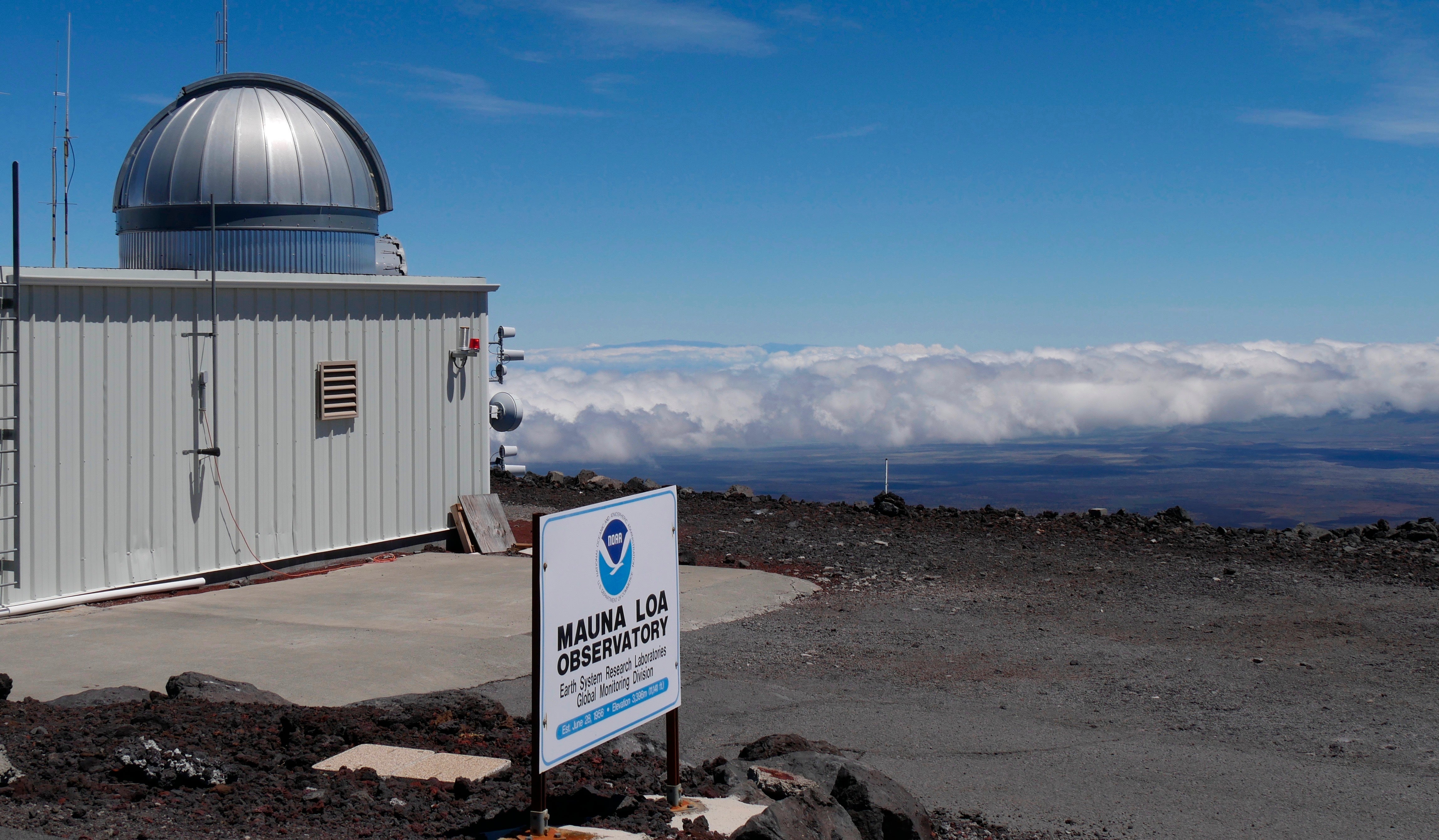Earth’s carbon dioxide levels hit record high despite pandemic
Average rate of increase is faster than ever, scientists say

Your support helps us to tell the story
From reproductive rights to climate change to Big Tech, The Independent is on the ground when the story is developing. Whether it's investigating the financials of Elon Musk's pro-Trump PAC or producing our latest documentary, 'The A Word', which shines a light on the American women fighting for reproductive rights, we know how important it is to parse out the facts from the messaging.
At such a critical moment in US history, we need reporters on the ground. Your donation allows us to keep sending journalists to speak to both sides of the story.
The Independent is trusted by Americans across the entire political spectrum. And unlike many other quality news outlets, we choose not to lock Americans out of our reporting and analysis with paywalls. We believe quality journalism should be available to everyone, paid for by those who can afford it.
Your support makes all the difference.The annual peak of global heat-trapping carbon dioxide in the air has reached another dangerous milestone: 50% higher than when the industrial age began.
And the average rate of increase is faster than ever, scientist reported Monday.
The National Oceanic and Atmospheric Administration said the average carbon dioxide level for May was 419.13 parts per million. That’s 1.82 parts per million higher than May 2020 and 50% higher than the stable pre-industrial levels of 280 parts per million, said NOAA climate scientist Pieter Tans.
Carbon dioxide levels peak every May just before plant life in the Northern Hemisphere blossoms, sucking some of that carbon out of the atmosphere and into flowers, leaves, seeds and stems. The reprieve is temporary, though, because emissions of carbon dioxide from burning coal, oil and natural gas for transportation and electricity far exceed what plants can take in, pushing greenhouse gas levels to new records every year.
“Reaching 50% higher carbon dioxide than preindustrial is really setting a new benchmark and not in a good way,” said Cornell University climate scientist Natalie Mahowald, who wasn’t part of the research. “If we want to avoid the worst consequences of climate change, we need to work much harder to cut carbon dioxide emissions and right away.”
Climate change does more than increase temperatures. It makes extreme weather — storms, wildfires, floods and droughts — worse and more frequent and causes oceans to rise and get more acidic, studies show. There are also health effects, including heat deaths and increased pollen. In 2015, countries signed the Paris agreement to try to keep climate change to below what's considered dangerous levels.
The one-year jump in carbon dioxide was not a record, mainly because of a La Nina weather pattern, when parts of the Pacific temporarily cool, said Scripps Institution of Oceanography geochemist Ralph Keeling. Keeling’s father started the monitoring of carbon dioxide on top of the Hawaiian mountain Mauna Loa in 1958, and he has continued the work of charting the now famous Keeling Curve.
Scripps, which calculates the numbers slightly differently based on time and averaging, said the peak in May was 418.9.
Also, pandemic lockdowns slowed transportation, travel and other activity by about 7%, earlier studies show. But that was too small to make a significant difference. Carbon dioxide can stay in the air for 1,000 years or more, so year-to-year changes in emissions don’t register much.
The 10-year average rate of increase also set a record, now up to 2.4 parts per million per year.
“Carbon dioxide going up in a few decades like that is extremely unusual,” Tans said. “For example, when the Earth climbed out of the last ice age, carbon dioxide increased by about 80 parts per million and it took the Earth system, the natural system, 6,000 years. We have a much larger increase in the last few decades.”
By comparison, it has taken only 42 years, from 1979 to 2021, to increase carbon dioxide by that same amount.
“The world is approaching the point where exceeding the Paris targets and entering a climate danger zone becomes almost inevitable,” said Princeton University climate scientist Michael Oppenheimer, who wasn’t part of the research.
___
Read stories on climate issues by The Associated Press at https://apnews.com/hub/climate.
___
Follow Seth Borenstein on Twitter at @borenbears.
___
The Associated Press Health and Science Department receives support from the Howard Hughes Medical Institute’s Department of Science Education. The AP is solely responsible for all content.